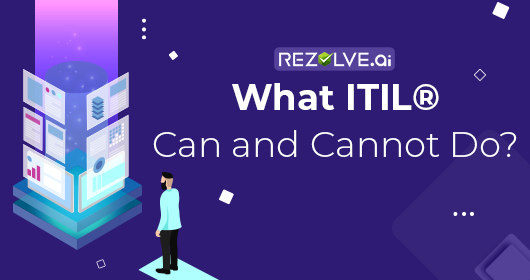Heading
Anthropic GenAI Models: Building Safer IT Systems
The number of IT systems we depend on for our work is increasing daily, making them vulnerable to cyber-attacks. However, old methods often need to be equipped to cope with the pace at which threats evolve. This is where Anthropic's Generative AI (GenAI) models come in, and this set of policies is bound to redefine information technology security.
To be different from the rest of the conventional tools, GenAI models do more than identify weaknesses. They learn and adapt accordingly, thus being able to predict and prevent attacks long before they occur proactively. This way of understanding empowers IT experts who can construct adaptable systems capable of withstanding whatever comes their way.
However, its advantages are not limited to technical excellence alone. GenAI models have transparency and interpretability that help people understand their decisions. Trust and collaboration are desired to navigate ethical issues around AI-driven security.
Let's plunge into the exciting world of Anthropic GenAI models while exploring how they could transform IT security as we know it. Moreover, one intelligent prediction at a time; discover how these innovative tools shape a safer digital future toward an intelligent prediction
Understanding Anthropic GenAI Models
The Generative AI (GenAI) modes from Anthropic have set themselves apart in the expanding field of language models. They tend to emphasize transparency and interpretability that distinguish them from the rest, thereby giving a peek into the black-box nature of most AI systems.
Anthropic’s models do not operate like black boxes as others do; instead, they aim to decompose their reasoning. This way, users can determine how the model made its decisions, thus building confidence and reducing biases. This is particularly critical as GenAI models increasingly enter sensitive domains like law and education.
It is not easy to achieve such transparency within complex networks. Anthropic leverages techniques such as visual attention, which reveals what data segments feed into a model's response. Although still in the infancy stages, these initiatives represent a significant advance towards ethical AI development.
Such demystifying decision-making by GenAI models enables users to understand and put this technology to appropriate use. This sets the stage for future partnerships between humans and AI, wherein we must be guided by openness and trust in each other.
Challenges in Traditional IT System Security
The modern technological environment presents numerous challenges to traditional IT security. Protecting sensitive data and vital assets is crucial as organizations depend on digital infrastructures.
Cyber Threats
Malware, phishing, and ransomware attacks are some cyber threats modern IT systems face. Traditional security mechanisms cannot cope with constantly changing hacker tactics. Failure to have strong defenses exposes firms to data breaches, financial losses and harm to reputation.
Legacy Vulnerabilities
Obsolete software and hardware in traditional IT systems open doors for attackers who take advantage of this. Such systems may not support security patches and updates and are hence vulnerable. This implies that legacy system management becomes more complicated and expensive because it necessitates integrating security needs with operational requirements for any organization.
Insider Risks
In traditional IT system security, insider risks are hazardous. Sensitive data or systems might be compromised intentionally or unintentionally by malicious insiders or negligent employees. Insider threats can be challenging to detect and mitigate through conventional security measures, requiring a more holistic approach that combines staff training, access controls, and monitoring efforts.
Complexity
Securing traditional IT environments is complicated by their complexity arising from various technologies, the spread of networks, and integrated systems. The more security is handled across platforms and devices, the more attack areas there are. Additionally, modern IT infrastructures have continuously dynamic natures, which may cause problems with traditional security approaches, creating fissures that attackers can exploit.
Resource Constraints
Limited resources such as budget, workforce, and experience make implementing effective security planning in traditional IT systems easier. In most cases, organizations' resource allocation tends to tilt towards reactive rather than proactive measures for security purposes. When an organization has no adequate finances to support its comprehensive strategies for safety implementation, it becomes highly susceptible to cyber-attacks and related threats.
Leveraging Anthropic GenAI for Enhanced Security
Anthropic GenAI is an intersection of anthropic reasoning and generative AI techniques that enhance classical security measures and deal with emerging threats more efficiently.
Adaptive Threat Detection
Anthropic GenAI is adaptive threat detection. As it grows from changes in evolving vulnerabilities, the defense mechanism quickly responds to them. This strategy will enable anticipation and resolution of potential risks currently emerging, strengthening the security position overall.
Behavioral Biometrics
Anthropic GenAI uses behavioral biometrics to find out who people are online based on what they do. To respond rapidly and take preventive actions against possible attacks, these deviations will be regarded as a likely cause for a breach in security.
Predictive Security Analytics
The Anthropic GenAI employs predictive security analytics to anticipate potential security threats by analyzing past data patterns. Organizations can establish proactive measures by identifying vulnerabilities beforehand while considering attack vectors, thus minimizing risk exposure and protecting critical assets.
Adversarial Resilience
Anthropic GenAI, on the other hand, is adversarially resilient to ever-evolving sophisticated cyber threats by continuously adapting its defenses. It does so by understanding the tactics used by adversaries and then coming up with suitable counter strategies, ensuring that even in the face of persistent and adaptive adversaries, it remains security postured.
Explainable AI for Security Auditing
Anthropic GenAI uses explainable AI techniques to ensure transparency in making decisions. In this regard, security auditors can understand how algorithms conclude, which is instrumental in developing trust and meeting regulatory demands.
Human-in-the-Loop Security Operations
When deployed within security operations, Anthropic GenAI leverages human expertise that complements its artificial intelligence-driven capabilities. This combines the superiorities of machine learning and human reasoning to more effectively detect threats, respond to incidents, and make decisions across complex security environments.
Closing Note
Anthropic GenAI models provide a new take on AI development that is responsible. They are leading in the transparency and interpretability of their designs to pave the way for more secure IT systems. The open reasoning capability that comes with these models as they change would be of high value.
These models can play a significant role in eliminating prejudice, encouraging human belief, and allowing them to utilize this innocent evil humanly. By adopting such an approach in the future, we can enable Artificial Intelligence (AI) to act as an ally against inequality and foster security and fairness in our digital world.




530x280%201.png)


.png)